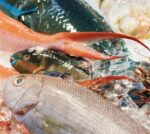
The Advertising Standards Authority Ltd. (ASA) announced new regulation in response to the results of the consultation conducted from the 13th Dec, 2023 to the 7th February, 2024. The new rules will prohibit ads for identifiable less healthy products*1 from being included in Ofcom*2-regulated TV services and on-demand program services (ODPS) between 5:30am and 9:00pm, and from being placed in paid-for space in online media at any time.
*1a subset of products classified as high fat, salt or sugar (“HFSS”)
*2Ofcom (Office of Communications Standards) is the regulator for the communications services in the UK
Overview of new rules on ads
Assessment is implemented according to Nutrient Profiling Technical Guidance published in 2011 by Department of Health.
The model uses a simple scoring system where points are allocated on the basis of the nutrient content of 100g of a food or drink. Points are awarded for ‘A’ nutrients (energy, saturated fat, total sugar and sodium), and for ‘C’ nutrients (fruit, vegetables and nut content, fibre and protein). The score for ‘C’ nutrients is then subtracted from the score for ‘A’ nutrients to give the final nutrient profile score.
Foods scoring 4 or more points, and drinks scoring 1 or more points, are classified as ‘less healthy’ and are subject to Ofcom’s controls on the advertising of foods to children on TV.
In 2007, Ofcom introduced broadcasting restrictions to significantly reduce the exposure of children to television advertising of HFSS. In 2022, the UK government announced a one-year delay in introducing regulations requiring additional restrictions on advertising for certain food and beverage products, alongside amendments to the Communications Act 2003.
Based on the result of the Consultation Implementing further restrictions on advertising for “less healthy” food and drink products restrictions,
HFSS product ads are not permitted to appear in media;
– specifically for under-16s (for example, a children’s magazine or on a website aimed at children); or
– where under-16s make up a significant proportion (more than 25%) of the audience (for example, advertorial content with an influencer that might have broad appeal but also a significant child audience).
The restriction will apply to HFSS advertisements that visually impact on children such as website, social media apps, games, outdoor advertisements, excluding audio only media such as podcasts, streaming services, online only radio. For further details, refer to Proposed amendments to the HFSS branding guidance and HFSS Media Placement.
Present and future of regulations on advertising in the UK, EU, and Singapore
| Overview of regulation | |
|---|---|
| the UK | The new rules (which will come into effect from October 2025) will prohibit ads for identifiable less healthy products (classified as HFSS) from being included in Ofcom-regulated TV services and ODPS between 5:30am and 9:00pm, and from being placed in paid-for space in online media at any time. |
| EU | Audiovisual Media Services Directive (AVMSD, Directive 2010/13/EU) governs EU-wide coordination of national legislation on all audiovisual media — traditional TV broadcasts and on-demand services, and also contains specific rules to protect minors from advertisements of harmful products. The AVMSD imposes an obligation on Member States to encourage self- and co-regulation, which means the regulation is not necessarily mandatory for Member Nations. Media service providers should develop codes of conduct regarding audiovisual commercial communications accompanying or included in children’s programs of HFSS. |
| Singapore | An advertising prohibition of product advertisements for the least healthy SSBs (i.e. those that receive the poorest front-of-pack label grade) on all local mass media platforms, including broadcast, print, out-of-home and online channels was enforced on the 10th Oct, 2019. MOH TO INTRODUCE MEASURES TO REDUCE SUGAR INTAKE FROM PRE-PACKAGED SUGAR-SWEETENED BEVERAGES (Ministry Of Heath, Singapore) |
Requirements on nutrient content claims such as “healthy” can be found in many countries including Japan and the US, but not many countries enforce advertising (prohibition/restriction) regulations for less healthy food and drink products. With various initiatives being taken worldwide to combat obesity, it is essential to continue paying attention to the labeling methods for nutritional information and the movements towards legal revisions.
Share/Like/Follow:
Newsletter Signup
We issue monthly e-newsletters, which provide you with the latest updates on food labeling/regulations in Japan.
If you want to make sure to not miss any issue, please click below.
Related Service
Research Services on Ingredients & Food Labeling -For the Japanese Market-
We verify the conformity of ingredients and additives with the standards for use in Japan based on specifications such as formulation lists. We also verify the conformity of the proposed labeling of ingredient names, nutrients, etc. with the labeling standards based on specifications such as formulation lists.

Label bank Co., Ltd. Regulatory inspections and Consulting Research staff
Born in Taiwan. Specializing in nutrition, she is mainly engaged in research work on ingredients and additives to be exported from Japan to overseas, as well as managing databases for legal search systems, such as nutrients and labeling standards in various countries.





